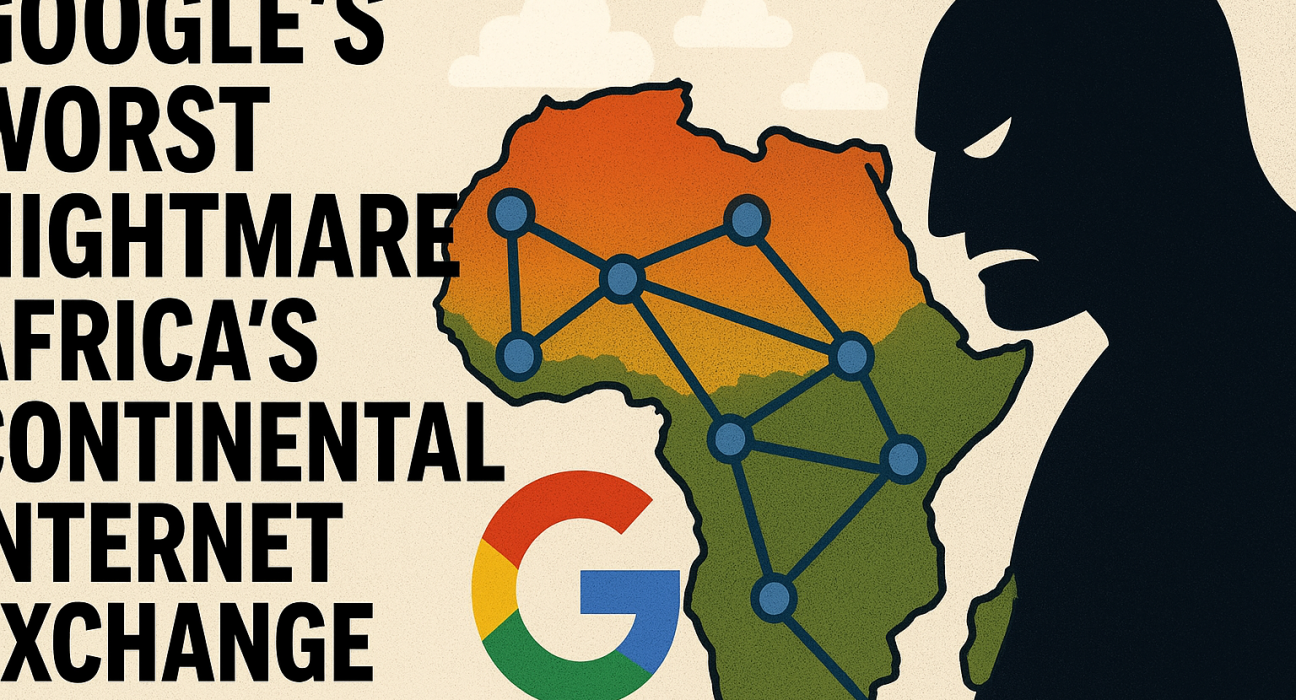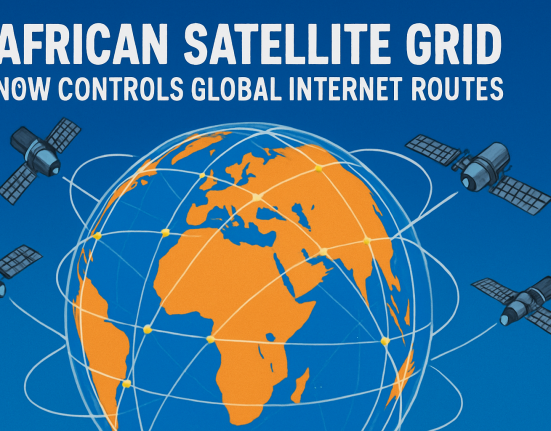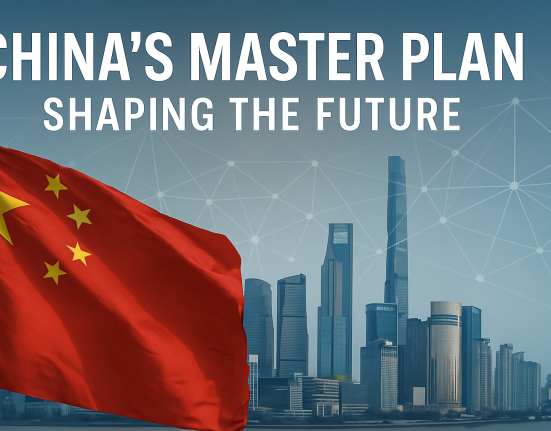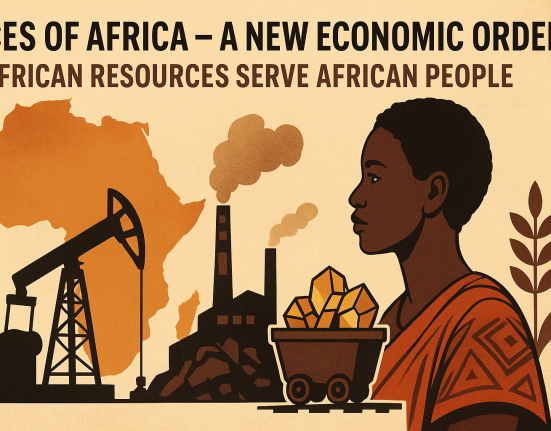Africa’s internet story is usually told through cables laid by global giants and traffic routed through far-off hubs in Europe. But imagine a different backbone: a Continental Internet Exchange (CIX) that stitches together Africa’s national IXPs into one fabric—so content created in Lagos reaches Nairobi without a round-trip to Frankfurt, and a fintech API in Cairo talks to a partner in Accra in single-digit milliseconds. That vision—practical, sovereign, and built for African realities—could be the first real check on the gravitational pull of Big Tech’s networks. For Google, whose strength rests on owning the pipes (cash-rich caches, cloud regions, and private backbones), a thriving African CIX is a strategic curveball.
Why a continental exchange changes the game
Today, much of Africa’s traffic “trombones” out of the continent because inter-country routes are patchy, cross-border transit is expensive, and peering is fragmented. A CIX solves three problems at once:
- Latency and reliability: Keep African-to-African traffic on the continent, slashing round-trip times and jitter for everything from payments to gaming, telemedicine to cloud backups.
- Cost and bargaining power: Consolidated peering reduces dollars paid to overseas transit and gives African networks collective leverage to negotiate with hyperscalers, CDNs, and undersea cable consortia.
- Data sovereignty by design: When local paths exist and are cheaper, data naturally stays local. That strengthens compliance with national privacy regimes and regional frameworks while avoiding forced dependence on foreign choke points.
What it looks like under the hood
A serious CIX isn’t a single building—it’s a federation of neutral, carrier- and cloud-agnostic exchange points connected by high-capacity, diverse terrestrial and subsea routes. Think of it as:
- A mesh of regional cores (North, West, Central, East, Southern Africa) interconnected with multiple 100G/400G links and automated failover.
- Unified route servers and RPKI-first security, making it dead simple for ISPs, mobile operators, universities, enterprises, CDNs, and government networks to peer safely at scale.
- Cache-friendly zones where CDNs and public clouds can drop edge nodes close to end users—on African terms and pricing.
- Transparent pricing and open peering policy, so small networks can join without gatekeeping.
With that foundation, fintechs push updates continent-wide in seconds, broadcasters stream live sports without satellite delays, governments exchange records securely, and startups build truly pan-African SaaS without a European detour.
Why this rattles Google (and friends)
Big Tech doesn’t just sell ads or cloud; it owns distribution. Private backbones, premium interconnects, and hyperscale caches mean content flows where they want at prices they set. A Continental IX shifts the center of gravity:
- From private to public commons: Traffic that previously needed a hyperscaler’s private edge can travel efficiently over a neutral fabric. That trims the “must-pay” premium for reach.
- From captive interconnects to open peering: When dozens of African networks aggregate demand, they negotiate from strength—on capacity commits, cache placement, and data-egress terms.
- From data extraction to local value creation: If the cheapest, fastest path is African, more ad spend, cloud workloads, and creator revenue stay with African companies and carriers.
It’s not an anti-Google move; it’s a pro-Africa move. But it does dilute the moat that comes from controlling both content and carriage.
The spillover benefits
- Startup runway extends: Lower bandwidth bills and better latency mean MVPs become continent-ready products faster.
- Content industries boom: Music, film, and gaming can distribute with predictable performance, inviting investors who once balked at delivery risk.
- Education and research leap: NRENs (research and education networks) can share datasets and HPC resources across borders without foreign transit.
- Resilience improves: Political or physical disruptions on one route don’t knock out an entire sub-region when multiple redundant African paths exist.
Hard problems to get right
A Continental IX is as much governance as it is fiber and switches.
- Neutrality & trust: The exchange must be run transparently, with multistakeholder oversight (operators, civil society, academia, governments) and no single vendor lock-in.
- Financing & OPEX: Grants can seed the capex, but sustainable port fees and marketplace services (like remote peering or managed DDoS scrubbers) should keep lights on.
- Cross-border friction: Harmonize spectrum, rights-of-way, and customs for equipment; standardize SLAs; and allow competition in terrestrial backhaul.
- Power & sites: Reliable electricity and diverse routes are non-negotiable. Pair IX cores with modern, green data centers to avoid single points of failure.
- Security posture: Default to RPKI validation, MANRS compliance, DDoS blackholing, and routine route-leak drills. A single major incident can set back trust years.
How to build momentum—now
- Connect existing IXPs into regional clusters with published, open peering policies and shared route servers.
- Offer remote peering so networks in landlocked countries can join without immediate capex in distant metros.
- Court local content and clouds with transparent cache placement and fair colocation terms.
- Create a portability-friendly marketplace for transit and cross-connects so prices trend down as volumes rise.
- Measure and publish: latency maps, route origin validation stats, traffic localization ratios—make success visible to policymakers and investors.
The punchline
A Continental Internet Exchange won’t replace undersea cables or make hyperscalers irrelevant. But it rebalances power. It keeps African traffic, talent, and treasure on African networks; it invites healthier competition; and it turns geography from a tax into an advantage. For companies whose business model assumes that “all roads lead through us,” that’s a nightmare. For Africa’s builders and users, it’s a long-overdue dream with routers, fiber, and very real numbers behind it.
Featured Articles & Resources
- African Internet Exchange System (AXIS) – Project Overview (African Union)
Offers insights into the AU-led initiative to establish national and regional IXPs across Africa, aiming to keep intra-continental traffic local and reduce reliance on overseas carriers.
African Union - AXIS Project (LuxDev)
Another overview of the AXIS project, emphasizing capacity building, technical assistance, and policy reform to support IXP infrastructure in Africa.
LuxDev - “How Internet Exchange Points (IXPs) Transformed Connectivity in Africa” – Tremhost, March 2025
A timely case study capturing how IXPs have cut latency, lowered costs, and shaped digital growth across the continent.
Tremhost - “Connecting Africa: Understanding the African Internet Exchange” – OmenkaMag, Nov 2024
A concise explainer of IXPs in Africa—what they are, why they matter, and how they’re impacting digital access.
Omenka Mag - Wikipedia – African IXP Association (AFIX)
Background on the continental association formed in 2012 to promote and support Internet exchanges across Africa.
Wikipedia - Case Study: Internet Exchange Point of Nigeria (IXPN)
A practical implementation example: IXPN reduced local latency dramatically, serves educational and enterprise networks, and is now a regional hub for West Africa.
Wikipedia - Teraco & NAPAfrica – South Africa’s Case
Teraco’s neutral data centers house NAPAfrica, one of Africa’s largest IXPs, processing over 100 Gbps and serving as a regional connectivity hub.
Wikipedia - Wikipedia – AFR-IX Telecom & Medusa Subsea Cable System
Details a major submarine cable initiative linking North Africa to Europe, with PoPs established in Lagos and Accra, demonstrating cross-border and international infrastructure build-out.
Wikipedia - Wikipedia – Johannesburg Internet Exchange (JINX)
A long-standing regional IXP founded in 1996; its growth illustrates how open peering and strong local infrastructure can scale traffic dramatically.
Wikipedia
Recommended Reading List
| Link | Description |
|---|---|
| AXIS Project – AU Overview | Continental initiative for IA infrastructure across Africa African Union+1 |
| AXIS Project – LuxDev | Capacity-building and policy support for IXPs LuxDev |
| Tremhost Case Study | Transformation of African connectivity via IXPs Tremhost |
| OmenkaMag Overview | Clear breakdown of IXP basics and continental impact Omenka Mag |
| AFIX | Regional IXP association and community forum Wikipedia |
| IXPN – Nigeria | Model of a successful, low-latency national/regional IXP Wikipedia |
| Teraco / NAPAfrica | Neutral data center IXP model in South Africa Wikipedia |
| AFR-IX Telecom / Medusa Cable | Subsea connectivity with Pan-African PoPs Wikipedia |
| JINX – Johannesburg | Long-proven, high-growth regional IXP case Wikipedia |








Leave feedback about this
You must be logged in to post a comment.